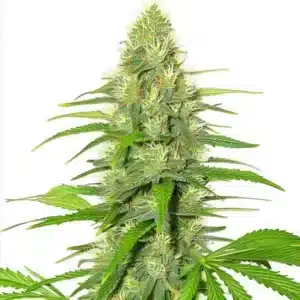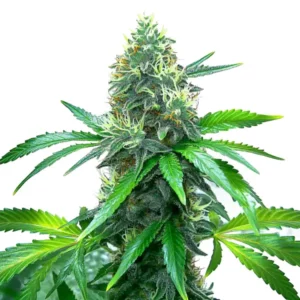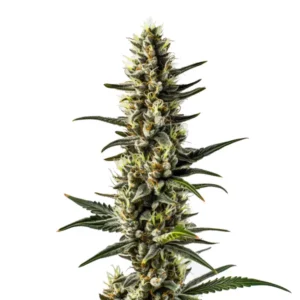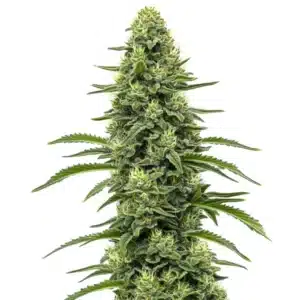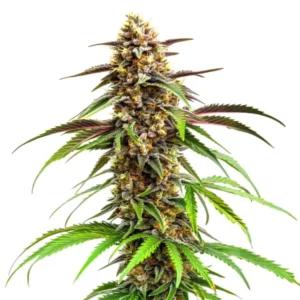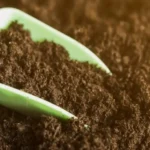
Common Problems with Cannabis Transpiration and Solutions
Cannabis transpiration is a crucial process that significantly affects plant health. It’s how plants release moisture through their leaves, helping them absorb nutrients and maintain temperature. However, growers often encounter issues that can impact their plants’ ability to transpire effectively. Knowing common problems with cannabis transpiration and solutions is essential to prevent stress, nutrient imbalances, and stunted growth, ensuring your plants remain healthy and productive.
When cannabis plants struggle with transpiration, symptoms like wilting leaves or stunted growth can appear. This can be frustrating, especially if you’re unsure why it’s happening. Luckily, by recognizing the signs and knowing the root causes, you can find effective solutions.
Recommended Strains
White Widow
|
|
THC | 18% - 25% (Medium) |
|
|
Type | Feminized |
|
|
Yield | High |
|
|
Phenotype | 45% Indica / 55% Sativa |
OG Kush
|
|
THC | 20% - 24% (Medium) |
|
|
Type | Feminized |
|
|
Yield | Medium |
|
|
Phenotype | 55% Indica / 45% Sativa |
Let’s dive into the common problems with cannabis transpiration and solutions that help ensure your plants grow strong and healthy. Whether you’re a novice grower or have years of experience, these insights can make all the difference.
Cannabis Leaf Wilting Causes and Fixes
Wilting leaves are a common sign that something is amiss with your cannabis plants’ transpiration. This problem often arises from environmental stressors like improper watering or nutrient deficiencies. When plants can’t transpire efficiently, they struggle to maintain their structure, leading to droopy leaves.
One effective way to address wilting is by assessing your watering routine. Overwatering can suffocate roots, while underwatering deprives them of essential moisture. Ensure your soil drains well and water only when the top inch feels dry. Additionally, test the soil’s pH level. A balanced pH ensures that nutrients are available to the plant.
Another potential cause of wilting is temperature fluctuations. Cannabis plants are sensitive to extreme temperatures, so maintaining a stable climate is crucial. Use thermometers to monitor the temperature and make necessary adjustments with heaters or fans to keep the environment optimal.
Lastly, consider the impact of pests on your plants. Insects like spider mites can damage leaves, making it harder for them to transpire. Regularly inspect your plants for pests and use organic pesticides to keep them at bay. These preventive measures are part of the broader strategy to tackle common problems with cannabis transpiration and solutions.
Preventing Cannabis Nutrient Lockout During Transpiration
Nutrient lockout can severely hinder a plant’s ability to transpire. This occurs when nutrients become unavailable due to pH imbalances or salt buildup. Signs of nutrient lockout include yellowing leaves and stunted growth. To prevent this, regularly flush your soil with pH-balanced water to remove excess salts.
Moreover, selecting the right cannabis strain can make a difference. For example, the Indica Sativa Hybrid strain is known for its resilience and can better withstand nutrient fluctuations. This can be especially helpful for beginners who may struggle with maintaining consistent nutrient levels.
To further aid in preventing cannabis nutrient lockout during transpiration, consider integrating a nutrient schedule tailored to your strains. This ensures that your plants receive the right nutrients at the right time, minimizing the risk of lockout. Using high-quality fertilizers can also help by providing essential nutrients without contributing to salt buildup.
Additionally, rotating your crops can prevent the depletion of specific nutrients in the soil. This practice not only maintains soil health but also supports optimal transpiration by ensuring nutrient availability. Knowing the root causes and employing these strategies can help manage cannabis transpiration rates for optimal growth.
Promos & Deals
Solving High Humidity Issues in Cannabis Grow Rooms
High humidity is a frequent challenge in grow rooms, disrupting cannabis transpiration. When the air is too moist, plants struggle to release water, leading to problems like mildew and mold. It’s essential to maintain optimal humidity levels to keep your plants healthy.
Invest in a quality hygrometer to monitor humidity levels. Ideally, keep humidity between 40-60% during the vegetative stage and reduce it to 30-40% during flowering. This adjustment ensures that your plants can transpire efficiently, reducing the risk of disease.
To further aid in solving high humidity issues in cannabis grow rooms, consider using desiccants to absorb excess moisture. These materials can be strategically placed around the grow room to maintain a balanced environment. Additionally, regular maintenance of your ventilation system ensures it operates efficiently in removing humid air.
Another effective approach is to use humidity-resistant strains that are less susceptible to mold and mildew. These strains can better withstand fluctuations in humidity, thus ensuring consistent transpiration. By implementing these solutions, you can mitigate common problems with cannabis transpiration and solutions related to high humidity.

Managing Cannabis Transpiration Rates for Optimal Growth
Regulating transpiration rates is key to optimizing cannabis growth. When managed correctly, plants can better absorb nutrients and maintain their temperature. One effective strategy is to control airflow in your grow room using fans and vents. This not only aids transpiration but also strengthens plant stems.
Another approach is to consider the strain you are growing. The White Widow strain, for example, is known for its adaptability to different environments. This makes it a practical choice for growers facing fluctuating humidity levels.
Light intensity also impacts transpiration rates. Ensure your plants receive adequate light without overheating. Adjust the height of grow lights to maintain a safe distance, allowing for proper temperature and humidity management.
Besides to adjusting light and airflow, incorporating CO2 supplementation can enhance plant growth by optimizing photosynthesis and transpiration rates. By providing additional carbon dioxide, you can improve your plants’ ability to utilize light and nutrients effectively.
Lastly, monitoring leaf temperature can provide insights into transpiration efficiency. Use infrared thermometers to ensure that leaf temperatures remain within an optimal range. These practices collectively support healthy growth and address common problems with cannabis transpiration and solutions.
Cannabis Plant Dehydration Signs and Remedies
Dehydration is another issue that affects transpiration. Signs include wilting, dry soil, and slow growth. It’s crucial to recognize these symptoms early to take corrective action. Begin by checking your watering schedule to ensure consistency.
A helpful tip is to use mulch to retain soil moisture. This practice minimizes evaporation, ensuring that your plants have access to water even during dry spells. Additionally, consider using strains like the OG Kush that are known for their drought resistance.
To further combat cannabis plant dehydration signs and remedies, consider using water-retaining polymers in your soil mix. These polymers can absorb and store water, releasing it slowly to plants as needed. This can be particularly beneficial in areas prone to dry spells.
Moreover, implementing a shade management system can protect plants from excessive sunlight, reducing water loss through evaporation. By combining these strategies, you can maintain consistent moisture levels, promoting healthy transpiration and growth.
Effective Techniques to Combat Dehydration
Drip irrigation systems are excellent for maintaining consistent moisture levels. They deliver water directly to the roots, minimizing waste and ensuring your plants receive what they need to transpire effectively. This setup is especially useful for large-scale grows.
Another effective remedy is to adjust your grow medium. Coco coir, for instance, retains moisture better than traditional soil, providing a buffer against dehydration. Experiment with different mediums to find what works best for your setup.
Using reflective ground covers can also be an effective technique to combat dehydration. These covers reduce soil temperature and evaporation rates by reflecting sunlight away from the soil surface, keeping it cooler and more moisture-retentive.
Additionally, incorporating organic matter such as compost into your soil can improve its water-holding capacity. This not only helps sustain moisture levels during dry periods but also enriches the soil with nutrients essential for healthy plant development.
Maintaining a balanced environment is crucial. Ensure your grow room is not too hot, as high temperatures can exacerbate dehydration. By keeping your plants cool and well-watered, you promote healthy transpiration and robust growth.
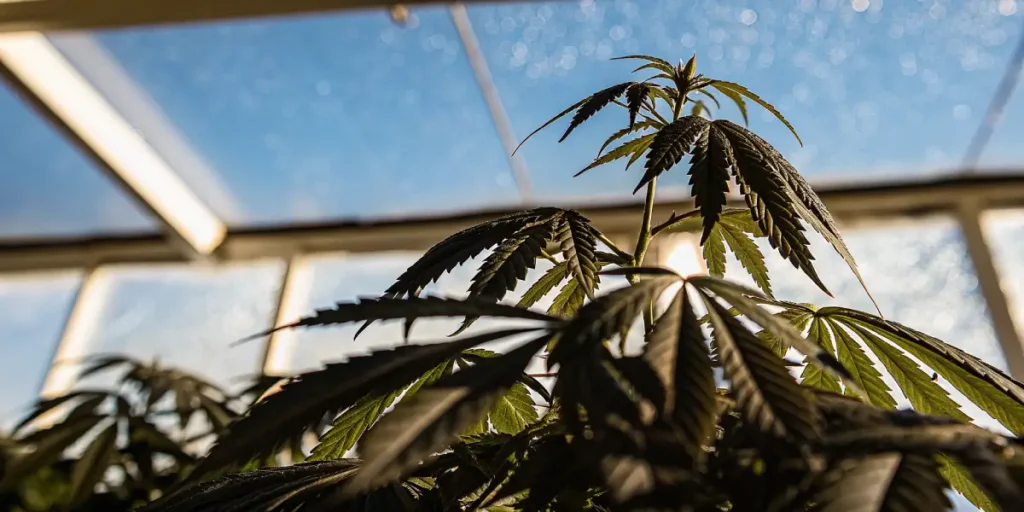
FAQs
What are common problems with cannabis transpiration and solutions?
Common problems with cannabis transpiration include wilting leaves, nutrient lockout, high humidity, and dehydration. Solutions involve adjusting watering schedules, monitoring pH levels, controlling humidity, and using resistant strains. Each issue has specific remedies that can restore healthy plant transpiration.
For instance, addressing wilting often requires assessing your watering routine and soil pH. Meanwhile, nutrient lockout can be resolved by flushing soil and monitoring pH levels regularly. Tailoring solutions to your specific problems is key to maintaining healthy cannabis plants.
How can I identify cannabis leaf wilting causes and fixes?
Wilting leaves typically indicate issues with watering, nutrients, or environmental stress. Check if the soil is too wet or too dry, and adjust your watering accordingly. Additionally, test the soil’s pH to ensure nutrients are accessible to the plant.
Addressing these issues often involves simple adjustments, such as improving soil drainage or using pH-balanced water. By knowing the causes of wilting, you can implement fixes that restore plant vitality and support effective transpiration.
What steps can I take to prevent cannabis nutrient lockout during transpiration?
Preventing nutrient lockout requires careful management of pH levels and soil salinity. Regularly flush your soil with pH-balanced water to remove any salt buildup. Using a reliable pH meter, aim for a range of 6.0 to 7.0 for optimal nutrient availability.
Choosing resilient strains, like those available at Blimburn Seeds, can also help. These strains are bred to withstand fluctuations in nutrient availability and environmental conditions, supporting healthy transpiration and growth.
How do I solve high humidity issues in cannabis grow rooms?
High humidity can impede transpiration, leading to mold and mildew. Use a hygrometer to monitor levels and maintain humidity between 40-60% during vegetative stages, and 30-40% during flowering. Adjust fans and vents to improve airflow and reduce moisture.
Investing in a dehumidifier can be beneficial for maintaining optimal conditions. By controlling humidity, you ensure that your plants can transpire effectively, reducing the risk of disease and supporting healthy growth.
What are the signs of cannabis plant dehydration, and how can I remedy it?
Signs of dehydration include wilting, dry soil, and stunted growth. Addressing these issues involves consistent watering and using mulch to retain soil moisture. Strains like OG Kush are known for their drought resistance, making them a good choice for dry conditions.
Drip irrigation systems offer a practical solution for maintaining soil moisture. By delivering water directly to the roots, they ensure your plants have consistent access to water, promoting effective transpiration and growth.


